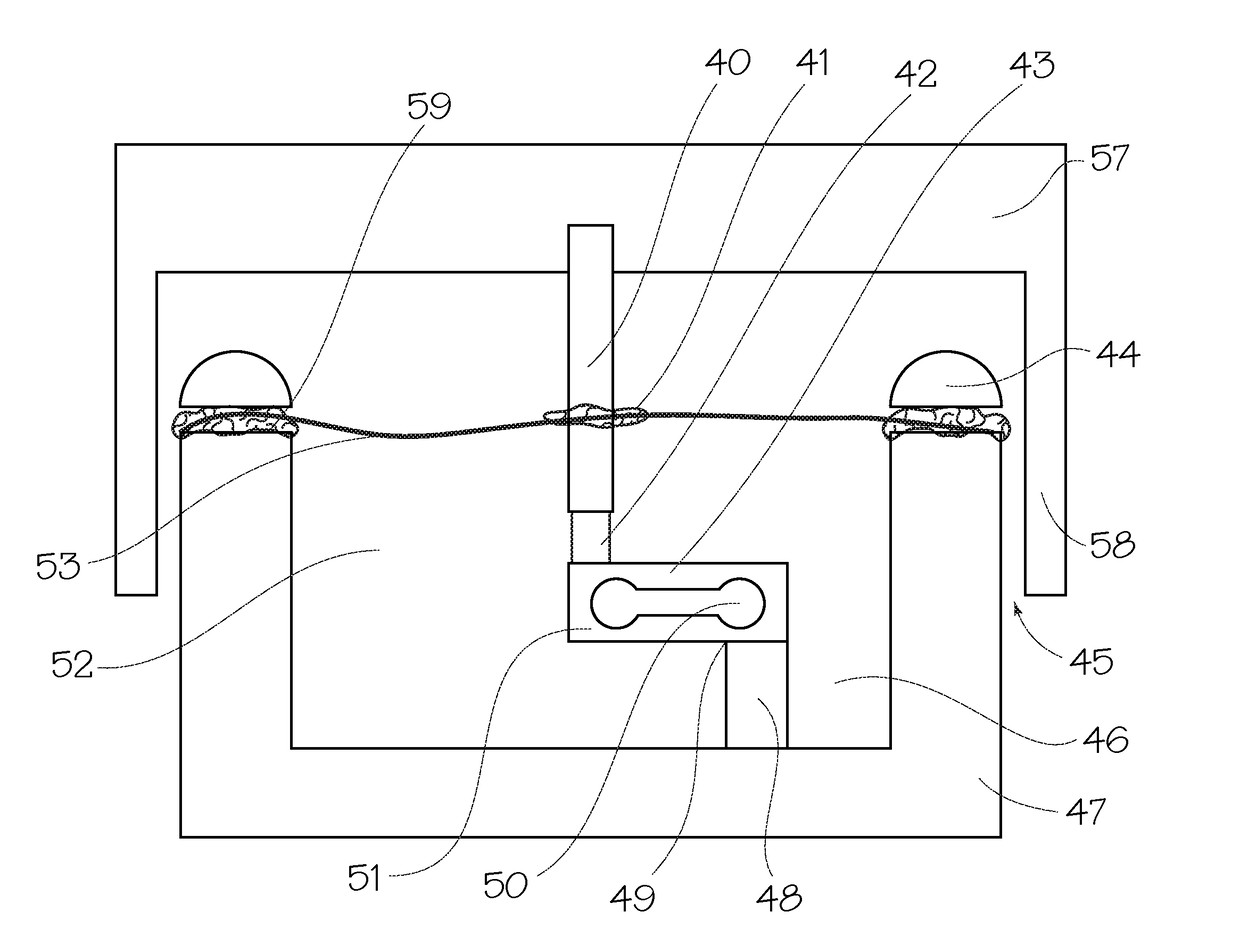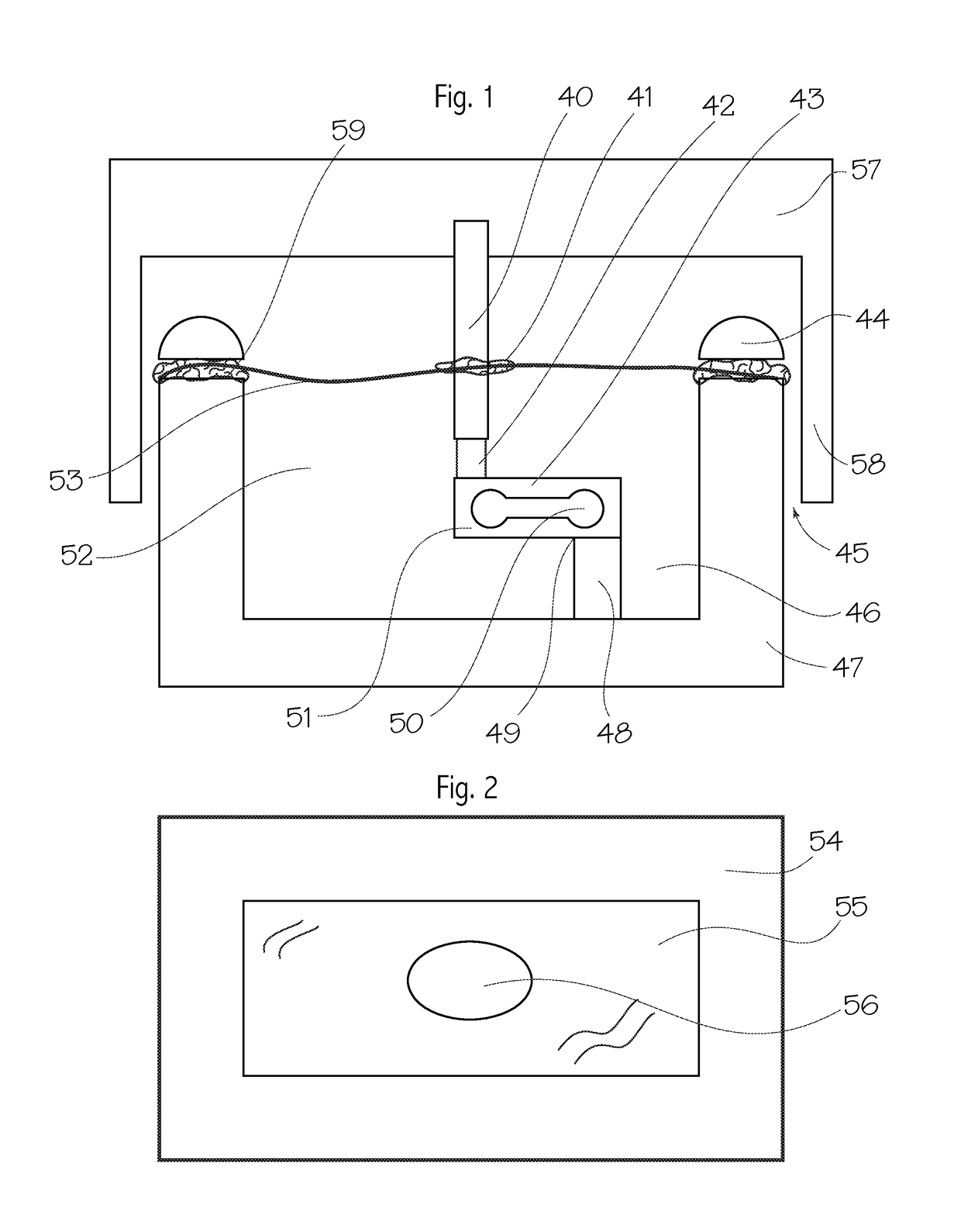Scale
a scale and scale technology, applied in the field of scales, can solve the problems of affecting the quality of study, changing the behavior or health of the subjects, altering the results or the quality of the study, etc., and achieve the effect of avoiding contamination
- Summary
- Abstract
- Description
- Claims
- Application Information
AI Technical Summary
Benefits of technology
Problems solved by technology
Method used
Image
Examples
Embodiment Construction
[0011]Turning now to FIG. 1, we see a cut-away side view an embodiment. A cut-away view of the case 47 is shown. The case may be rectangular, oval, or another shape. The shape may fit conveniently in a corner or end of an animal cage. The material may be metal, such as stainless steel or galvanized steel or aluminum, or a plastic such as ABS or another plastic that is non-toxic if chewed and does not out-gas. The case may be injection molded, 3D printed, monolithic or assembled from components.
[0012]A cut-away side view of a lid 57 with a skirt 58 is shown. The lid operates as a weighing platform for one or more animals. The lid skirt 58 overlaps the upper sides of the case creating a vertical opening 45 that is narrow enough and high enough to minimize penetration, in the opening, of cage detritus such as bedding, yet wide enough to achieve mechanical clearance between the lid and case and also to not collect moisture. The lid clears the membrane and membrane frame sufficient for t...
PUM
 Login to View More
Login to View More Abstract
Description
Claims
Application Information
 Login to View More
Login to View More - R&D
- Intellectual Property
- Life Sciences
- Materials
- Tech Scout
- Unparalleled Data Quality
- Higher Quality Content
- 60% Fewer Hallucinations
Browse by: Latest US Patents, China's latest patents, Technical Efficacy Thesaurus, Application Domain, Technology Topic, Popular Technical Reports.
© 2025 PatSnap. All rights reserved.Legal|Privacy policy|Modern Slavery Act Transparency Statement|Sitemap|About US| Contact US: help@patsnap.com


